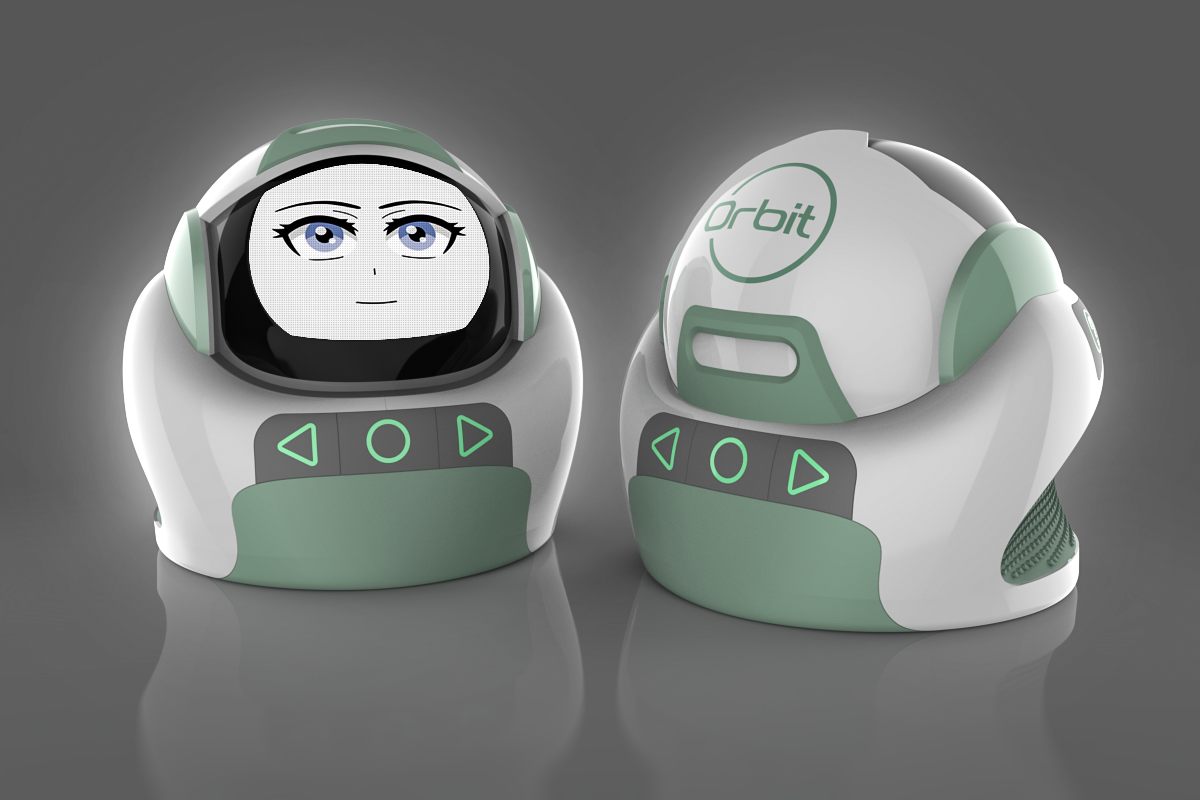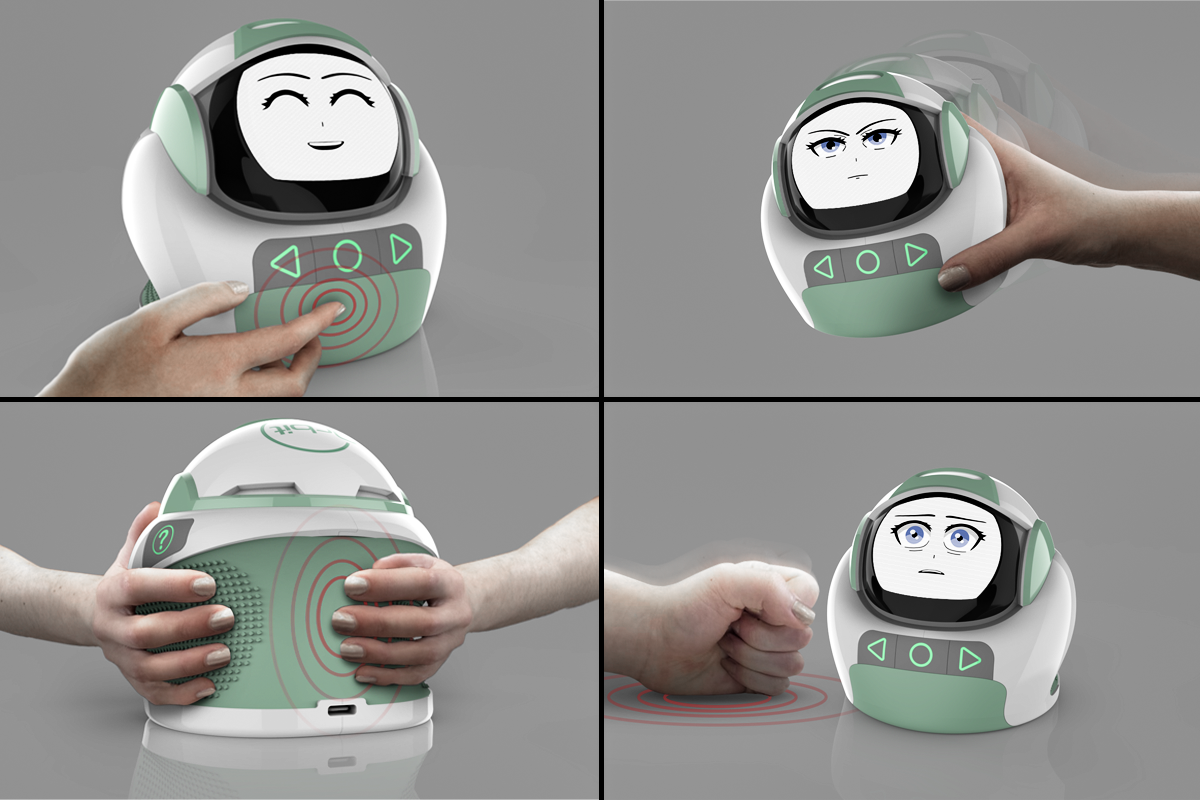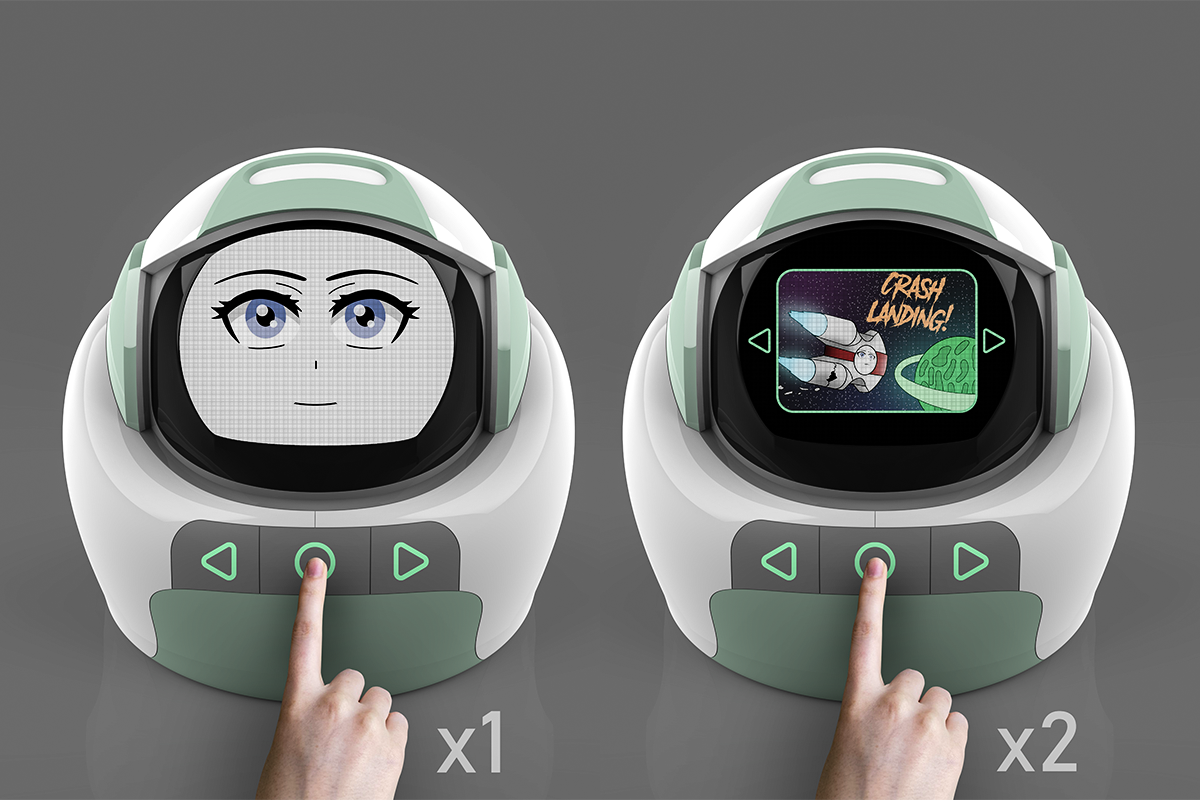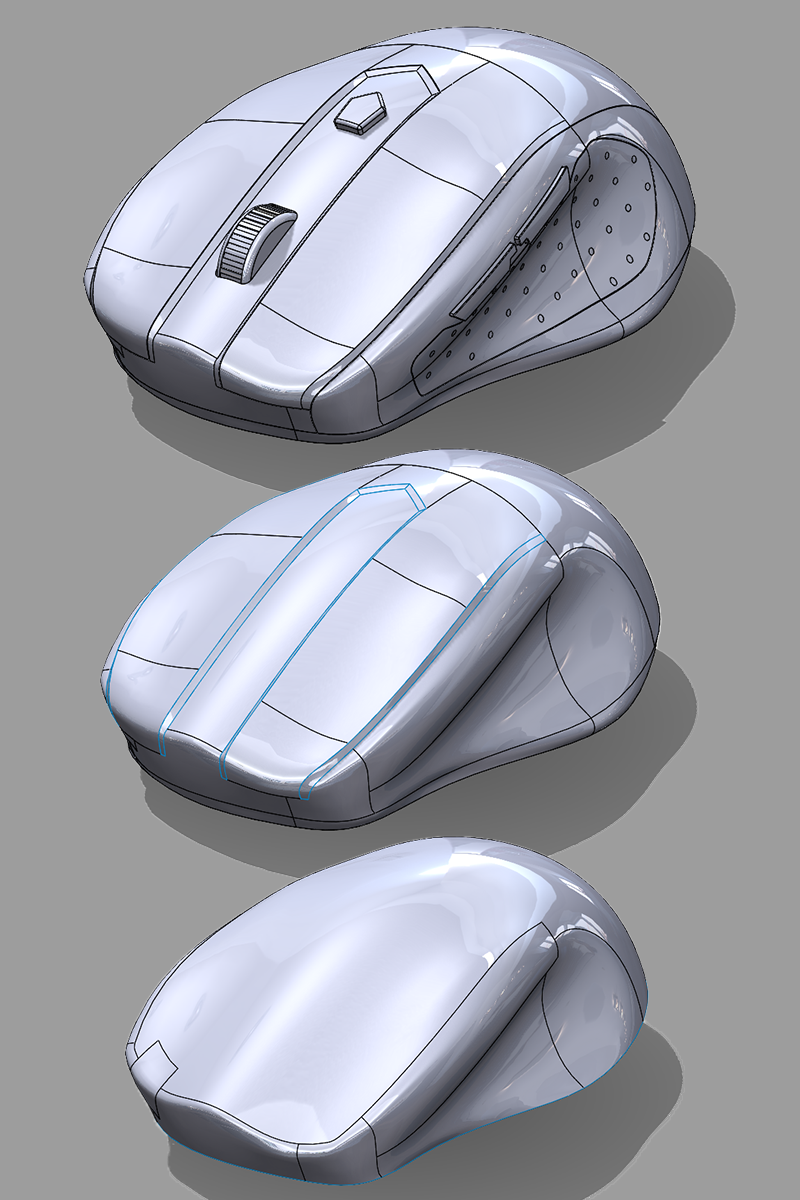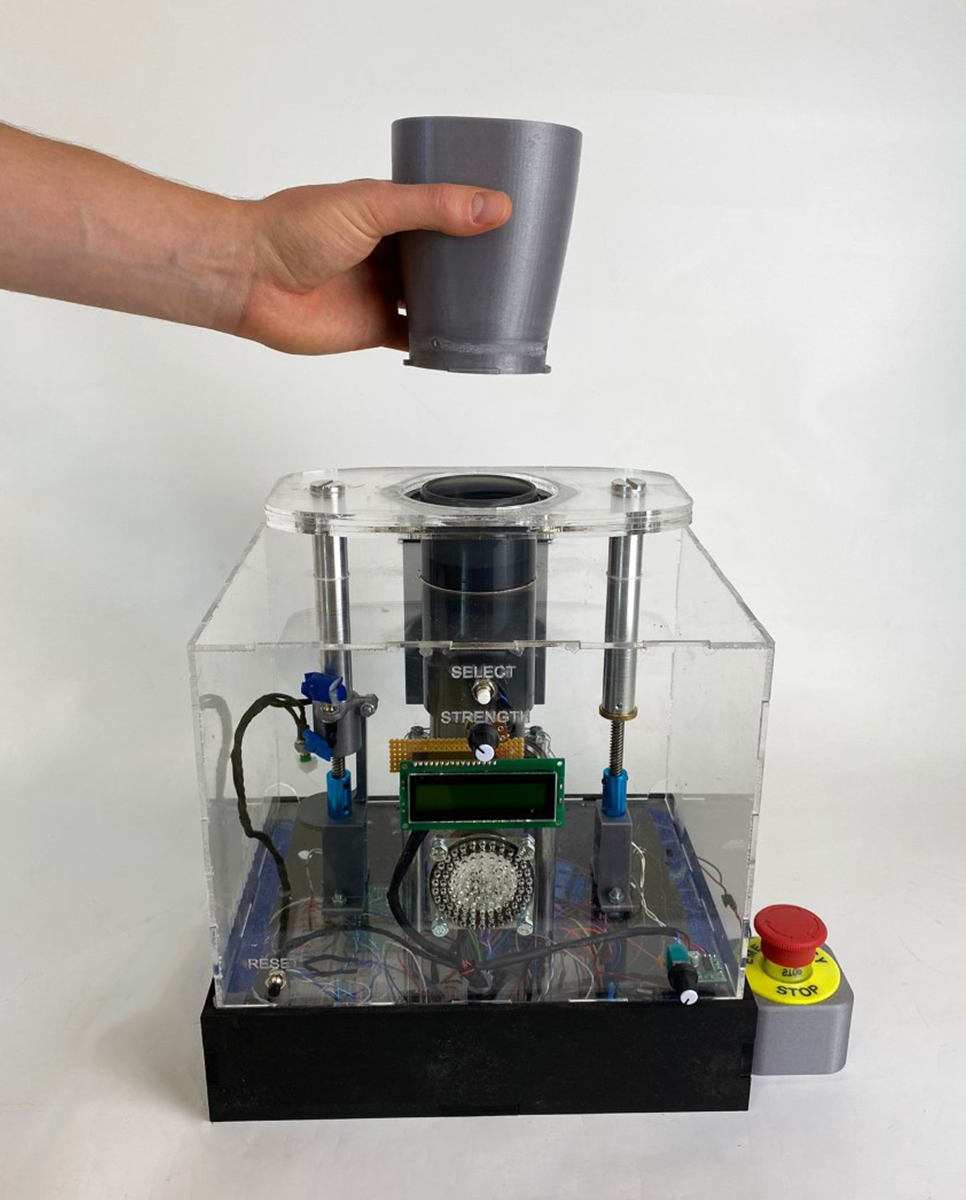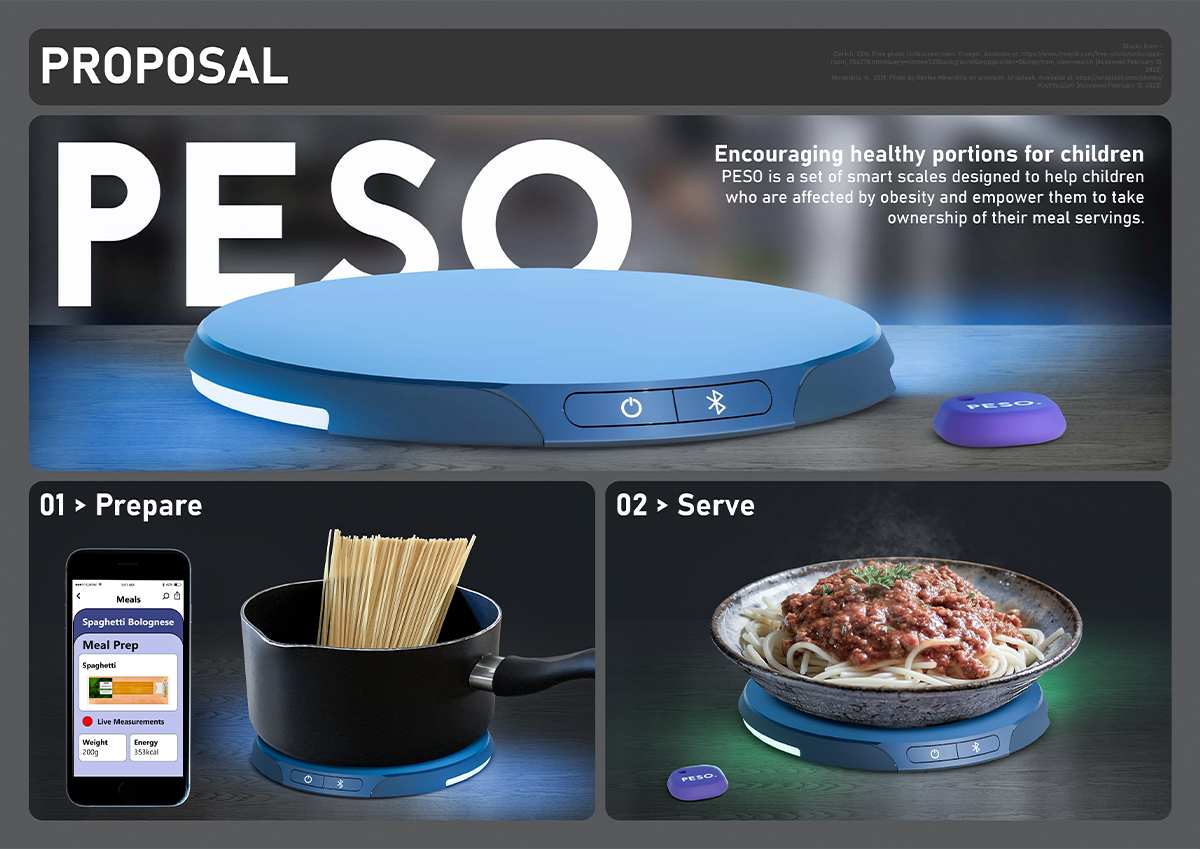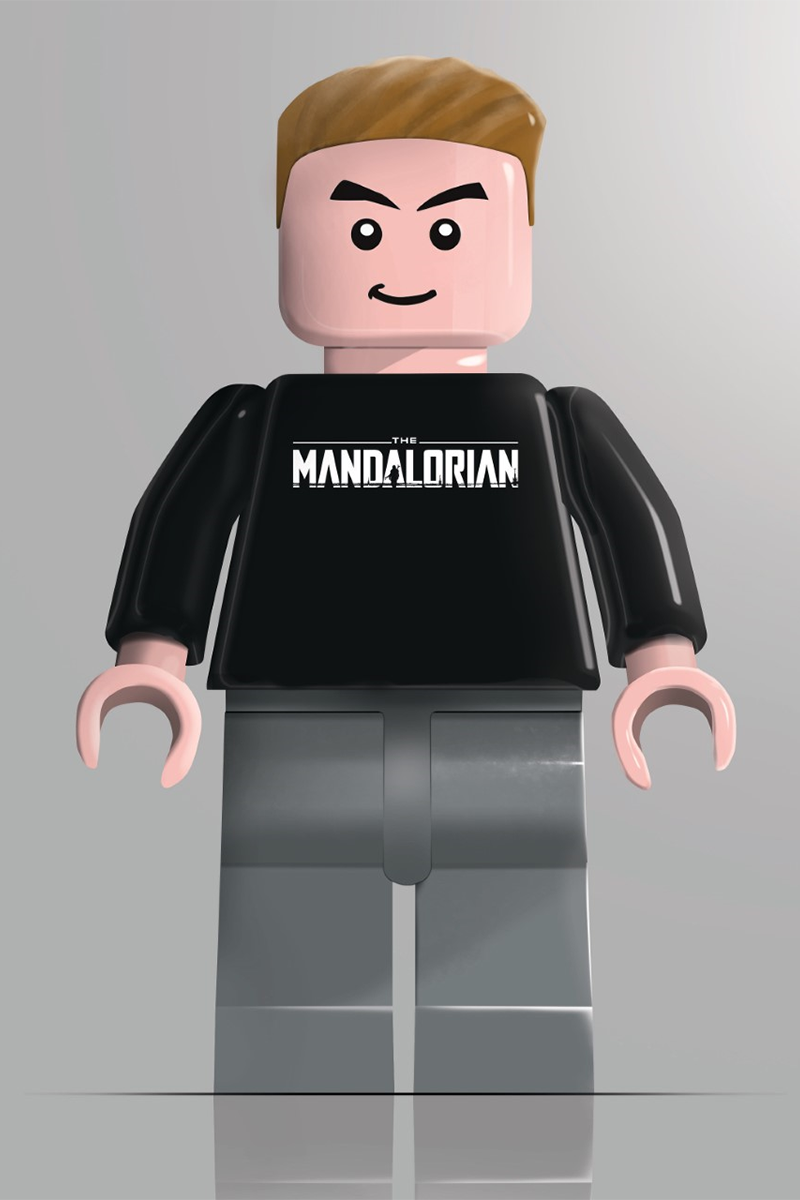My major design interest is toys, and so using my experience with ASD I wanted to design a device that would excite children and keep them interested while teaching them valuable abilities to help them interact in social situations.
Final year project
ORBIT - An Interactive Storytelling Robot to Teach Emotion Recognition to Children (Ages 5-8) with Autism Spectrum Disorder (ASD) and Other Learning Difficulties.
Final Year Design Project - Orbit
The aim of the product is to teach emotion recognition in a way that is entertaining to the user. Being able to empathise is essential to keep the user interested and engaged with the device but also to realise how their actions may affect others. For children with autism and other learning difficulties, being able to recognise emotions is vital to developing early social skills and progress through the early years of their life.
Orbit - Interaction Points
There are many ways to interact with Orbit. If Orbit is feeling sad you can cheer them up by tickling their belly. Giving Orbit a back massage is also a great way to make them feel happy. Press too hard however and you may hurt them. Children with autism can have a tendency to misjudge social appropriateness more so than typically developing children. It is therefore important to include interactions where Orbit may feel discomfort. In this example shaking Orbit will make them feel annoyed. Orbit additionally feels scared when experiencing sudden impacts on or around them. These interactions help to teach the user social appropriateness and understanding when someone may feel sad or hurt.
Orbit - Storytelling
Storytelling is a feature that not only provides entertainment to the user, but through the use of storytelling, Orbit can teach emotion in context. Simply press the home button to open up a selection of stories, then double-tap to play a story of your choosing. A narrator will tell the story while Orbit shows the emotions they're feeling. New stories can be uploaded from an external device. And using voice activation, users can play a story at random by saying "Hey Orbit, tell me a story."
Orbit - Functional Prototype
When the visor is lifted for the first time and Orbit turns on, a beginner’s tutorial will show the user the basic ways they can interact with Orbit. As part of the functional prototype and user testing, this tutorial was created and tested with fellow students to identify any future improvements and see how they liked playing with Orbit. Feedback was very positive and provided some key technical insights into how the prototype could improve.
Optional Module - Reverse Engineering a Bluetooth Mouse
With 3D scan data obtained using a "ZScanner" I was able to use Solidworks surface modelling to reverse engineer the artefact accurate to the mesh data. Analytical tools such as zebra stripes and curvature were utilised every step of the way controlling inflections and ensuring the mouse has a high-quality surface finish. Having had little to no experience using Solidworks upon arriving at the Design School in 2018, the final outcome of this project was especially rewarding.
The Smells Like "Bean" Spirit Coffee Machine
Tasked with building an automated coffee machine using an AeroPress module and a PIC18F45K20 microcontroller, as a team we went ambitious. The Smells Like "Bean" Spirit Coffee Machine is a unique device that allows you to select your brew strength, fill your custom 3D printed mug from below, automatically present coffee grounds for easy disposal and play the popular track "Smells Like Teen Spirit" while doing so!
Live Projects - PESO
In response to the brief: "Design a product that helps users take ownership of their physical health," I wanted to do something that would help prevent child obesity, a problem that is on the rise. Peso is a set of smart scales that clearly indicates to the child when they've reached an appropriate portion. Using an app, parents can add important details about their child which are used to calculate how many calories the child should be having for each meal. Using simple colours emitted onto the surface, the device then gives children the freedom to serve themselves and know when enough is enough.
Photoshop Rendering
As well as a Product Designer, I consider myself to be a Photoshop artist. Working at Disney has taught me so much more about Photoshop which I can now use in my design work. When a quick but high-quality concept is needed, I found Photoshop to be a really useful tool to draw shapes and render over the top to create a realistic 3D image. In this example, using a rough 2D template of a LEGO man, I am able to Photoshop over the image to create myself in LEGO form.
Benjamin Powell
Final year project
ORBIT - An Interactive Storytelling Robot to Teach Emotion Recognition to Children (Ages 5-8) with Autism Spectrum Disorder (ASD) and Other Learning Difficulties.
Work Experience
Being a Product Development Intern at the Walt Disney Company was such an incredible experience that really opened my eyes to product licensing and the scope of new product development within a successful franchise. Straight from the start, I was shown the ropes on how to be an EMEA Star Wars Reviewer and after a month found myself managing all Star Wars consumer products distributed to Europe, the Middle East, and Africa. I found the creative aspect of the job most enjoyable, having the opportunity to design and pitch concepts to the team and develop ideas for tech companies on an international scale. This certainly enhanced my creative thinking and quality of work. With the high level of responsibility I was given, my placement year was a true test of time management and working under pressure.
